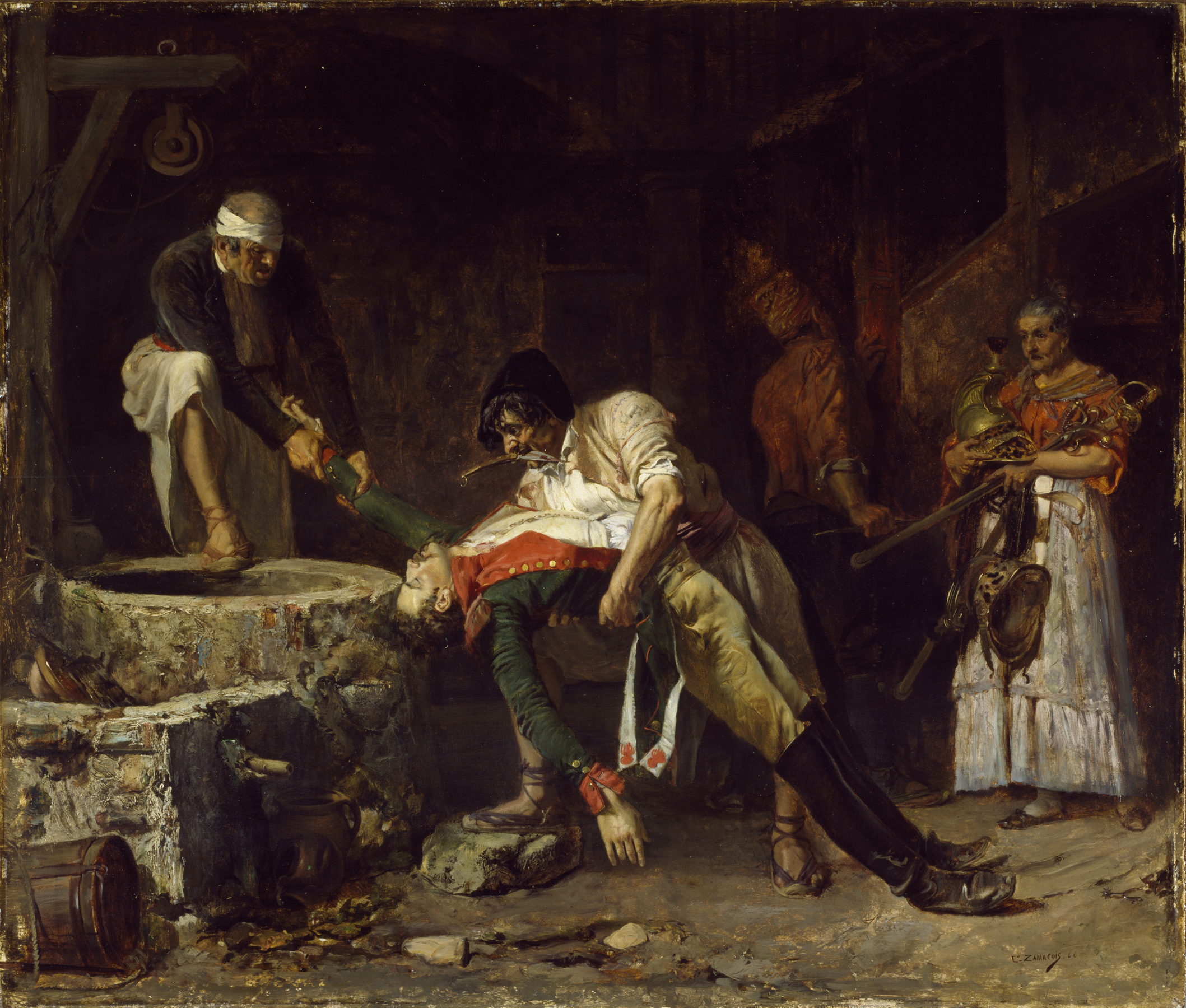Spain 1812, French Occupation
(18th and 19th Centuries )
Two Spanish partisans struggle to dispose of the corpse of a French cuirassier (cavalry soldier who wears a breastplate) by dumping it into a well. The old woman at the entrance carries the helmets and swords of their victim and of another French soldier who presumably has suffered the same fate. Zamacoïs, a pupil of J.-L.-E. Meissonier and a close associate of the Catalan painter Mariano Fortuny y Marsal, pursued his brief career in Paris. Like his teacher, he depicted scenes from the Napoleonic era; however, he showed them from the point of view of the Spanish victims.
Inscription
Provenance
Provenance (from the French provenir, 'to come from/forth') is the chronology of the ownership, custody, or location of a historical object. Learn more about provenance at the Walters.
Widow Zamacois y Zabala [date and mode of acquisition unknown]; William T. Walters, Baltimore, 1875, by purchase; Henry Walters, Baltimore, 1894, by inheritance; Walters Art Museum, 1931, by bequest.
Conservation
| Date | Description | Narrative |
|---|---|---|
| 6/12/1951 | Treatment | cleaned; coated |
| 6/27/1990 | Loan Consideration | examined for loan |
| 9/1/1991 | Treatment | cleaned; coated; loss compensation |
| 3/22/2005 | Loan Consideration | examined for loan |
Measurements
H: 17 7/16 x W: 20 1/2 in. (44.3 x 52 cm)
Credit Line
Acquired by William T. Walters, 1875
Location in Museum
Not on view
Accession Number
In libraries, galleries, museums, and archives, an accession number is a unique identifier assigned to each object in the collection.
In libraries, galleries, museums, and archives, an accession number is a unique identifier assigned to each object in the collection.
37.39


